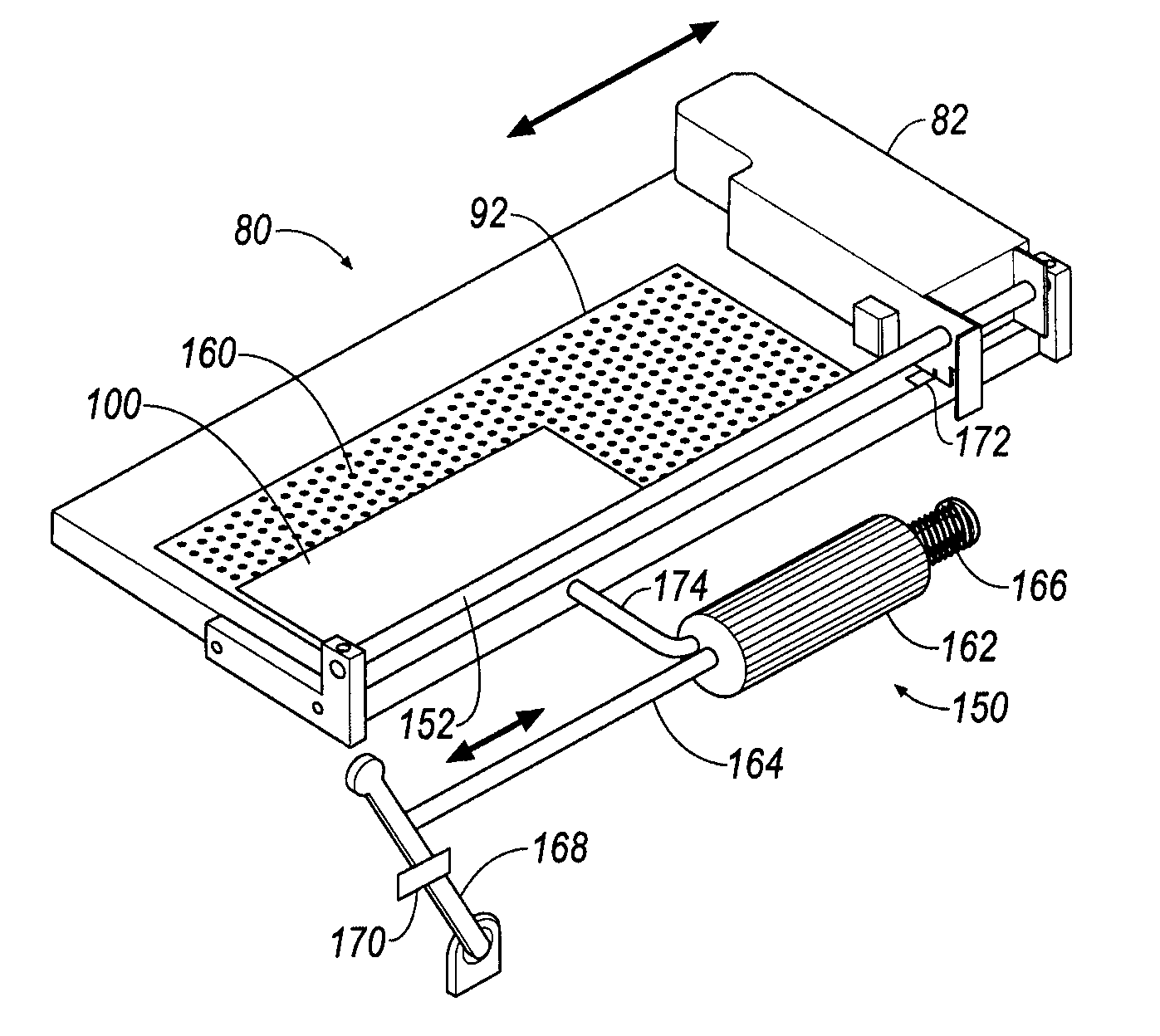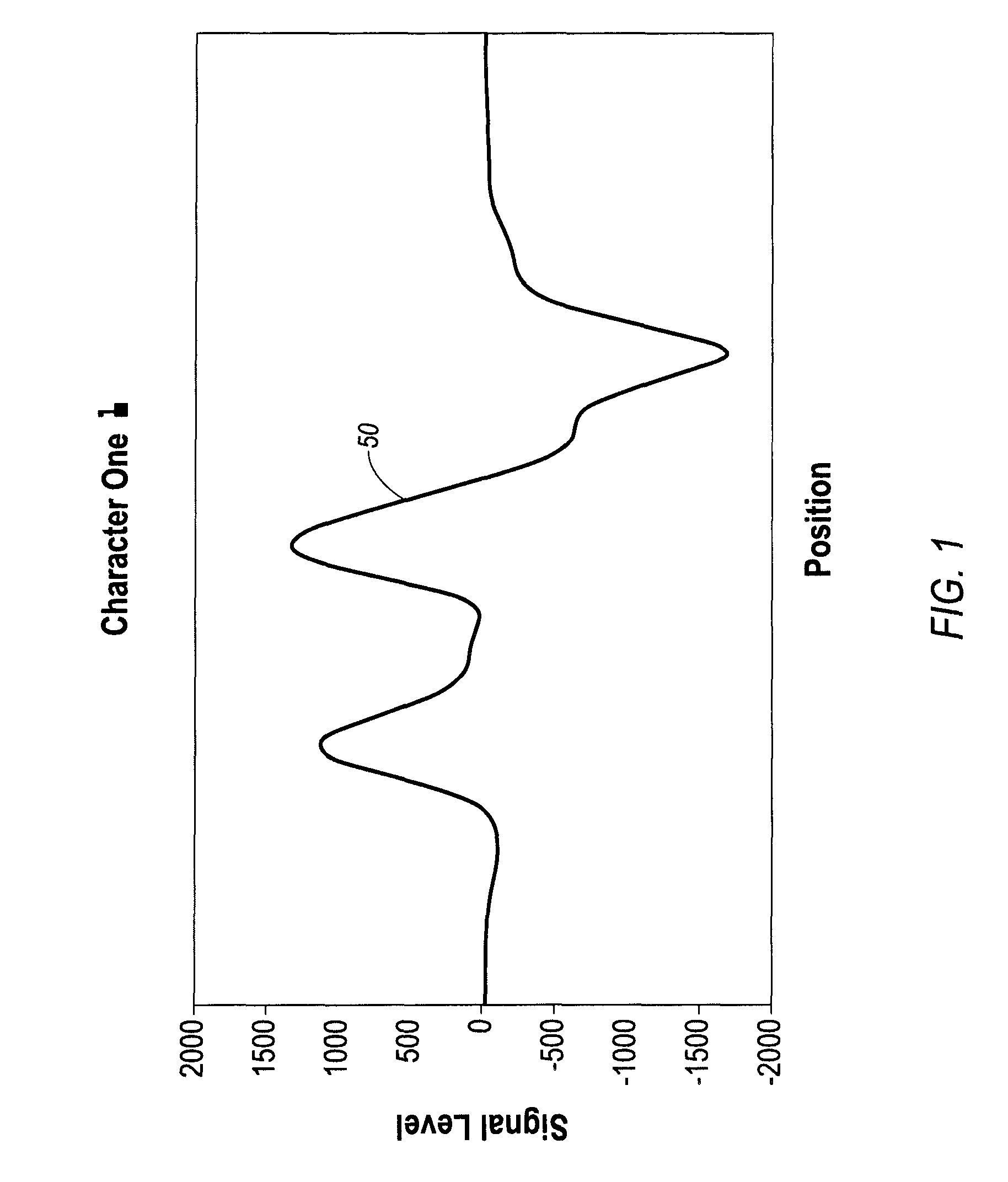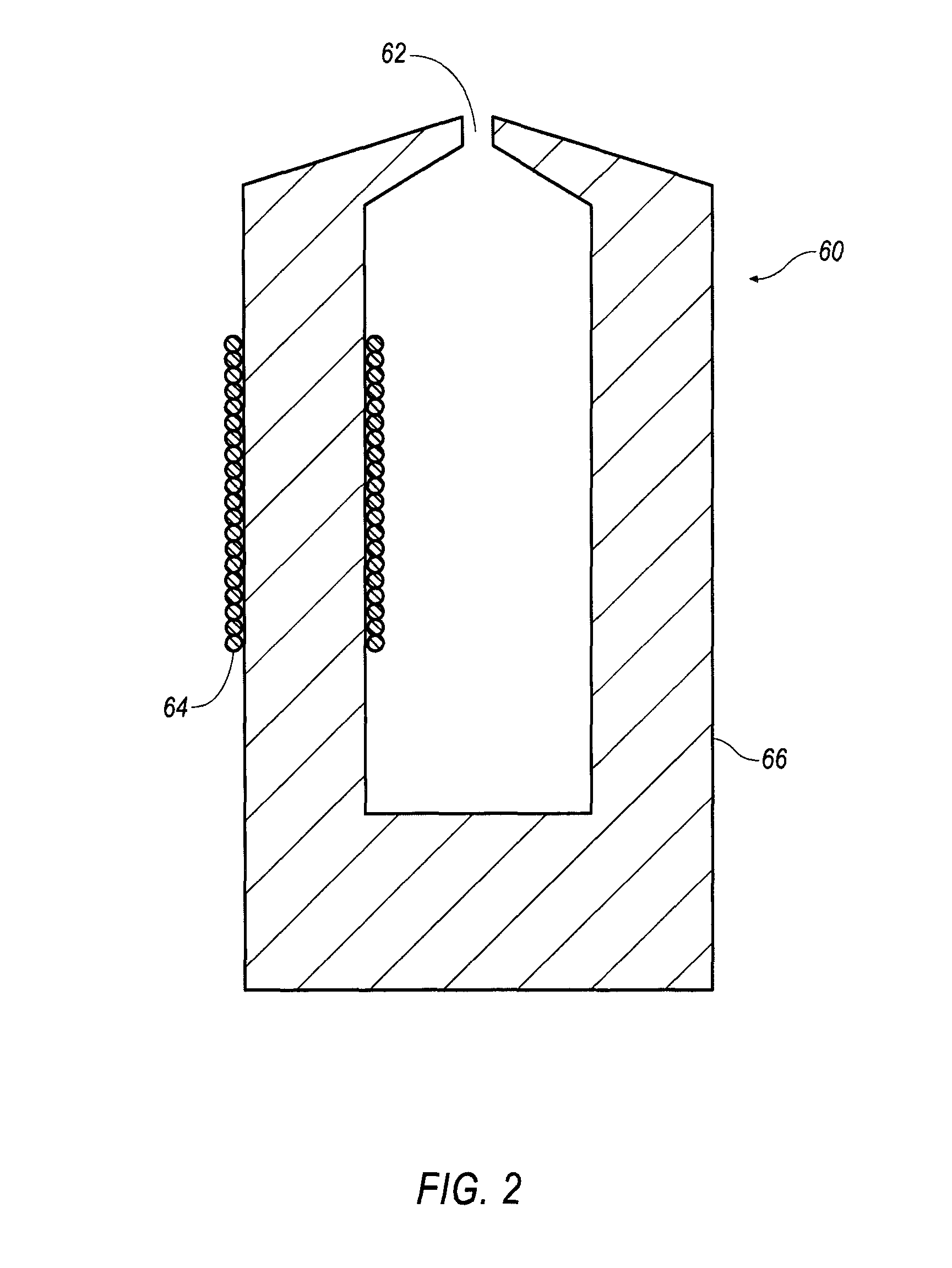Hand-operated document reader/imager with document retention device including manually-powered anti-skew methodology
- Summary
- Abstract
- Description
- Claims
- Application Information
AI Technical Summary
Benefits of technology
Problems solved by technology
Method used
Image
Examples
Embodiment Construction
[0036]The E-13B character set contains ten characters and four symbols as defined in the ANS X9.100-20-2006 (formerly published as X9.27) “Print and Test Specifications for Magnetic Ink Printing (MICR)” as published by Accredited Standards Committee X9, Inc., Annapolis, Md., United States. When used on a document for automated machine reading, the characters and symbols in the set must be printed using magnetic ink. ANS X9.100-20-2006 defines the dimensions of each character / symbol and the expected nominal waveform peak position and relative amplitude of waveform peaks.
[0037]FIG. 1 shows the waveform for the magnetic ink character one, from the E-13B MICR character set, as read from a responsive magnetic signal gap read head when the magnetized character is passed by the magnetic read head. The waveform is indicated at 50. As illustrated, the x-axis represents the position of the read head, and the y-axis represents the signal level.
[0038]MICR reading and recognition generally invol...
PUM
 Login to View More
Login to View More Abstract
Description
Claims
Application Information
 Login to View More
Login to View More - R&D
- Intellectual Property
- Life Sciences
- Materials
- Tech Scout
- Unparalleled Data Quality
- Higher Quality Content
- 60% Fewer Hallucinations
Browse by: Latest US Patents, China's latest patents, Technical Efficacy Thesaurus, Application Domain, Technology Topic, Popular Technical Reports.
© 2025 PatSnap. All rights reserved.Legal|Privacy policy|Modern Slavery Act Transparency Statement|Sitemap|About US| Contact US: help@patsnap.com



